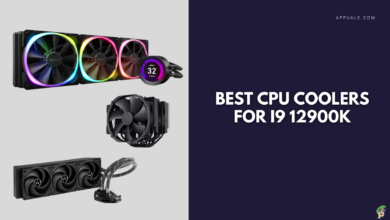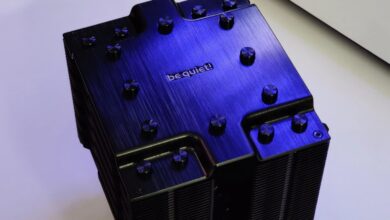Fractal Design Celsius+ S24 Prisma CPU Cooler Review
A lot of PC gamers and hardware enthusiasts are most likely familiar with all-in-one liquid coolers at this point. Since these coolers have not only gained popularity but have also become more affordable. However, a lot of them can end up being the exact same, with minor aesthetic and even smaller performance differences.
PRODUCT INFO Celsius+ S24 Prisma Manufacture Fractal Design Available at View at Amazon
This is where Fractal Design’s AIOs stand out. The company is already known for its excellent enthusiast-grade performance PC parts, and of course, the minimal and elegant design language. Fractal Design is most recognizable and applauded for their Define cases lineup. Their products are always refreshing in a world of flashy and gimmick-ridden products.
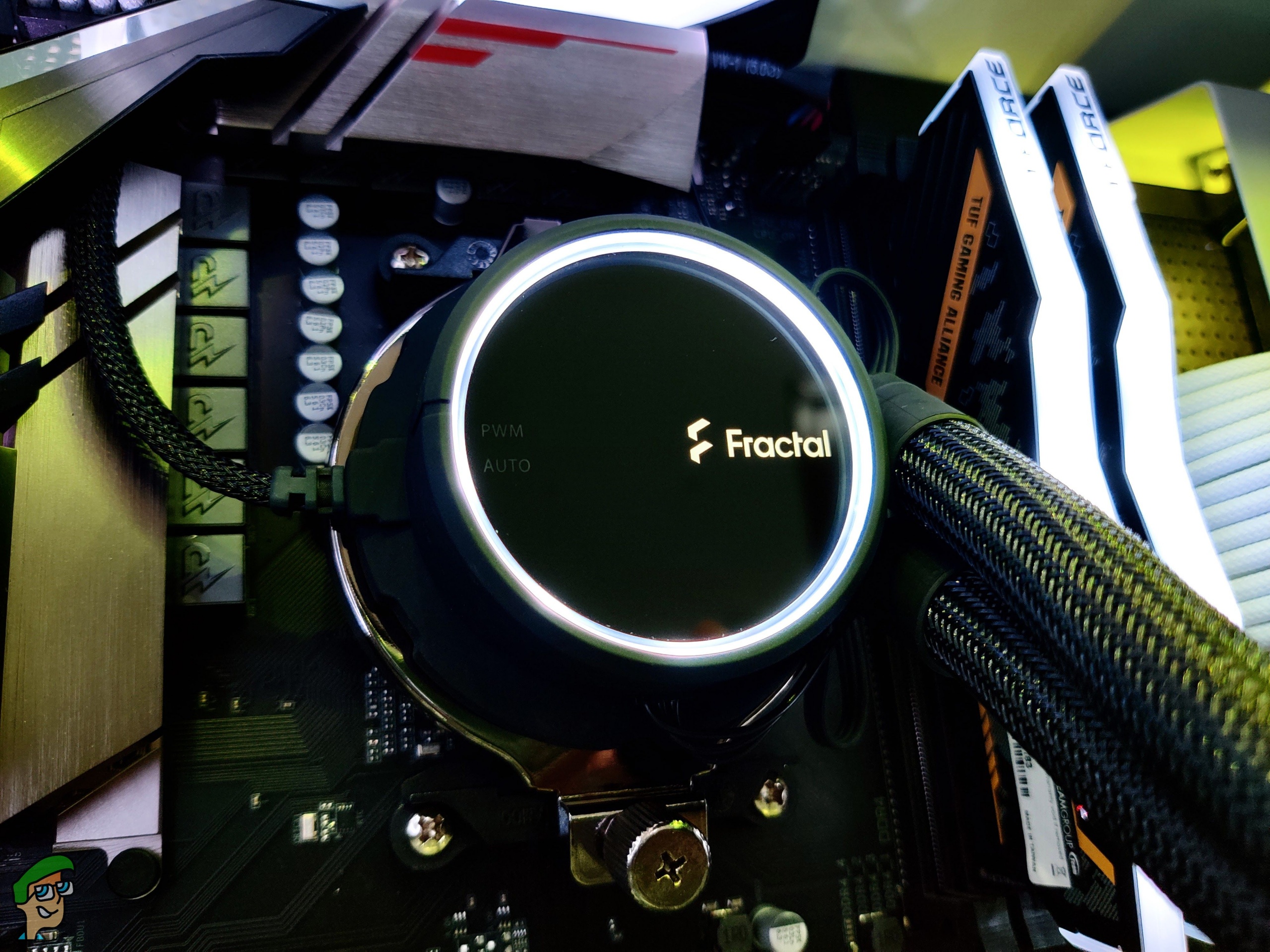
The Celsius series of the CPU coolers are no different. This Swedish company has managed to win the hearts of enthusiasts once again. Today, we’re taking a look at the Celsius+ S24 Prisma AIO. Furthermore, it has a few tricks up its sleeve. Keep on reading to find out why we love this near-perfect cooler from Fractal Design.
Box Contents
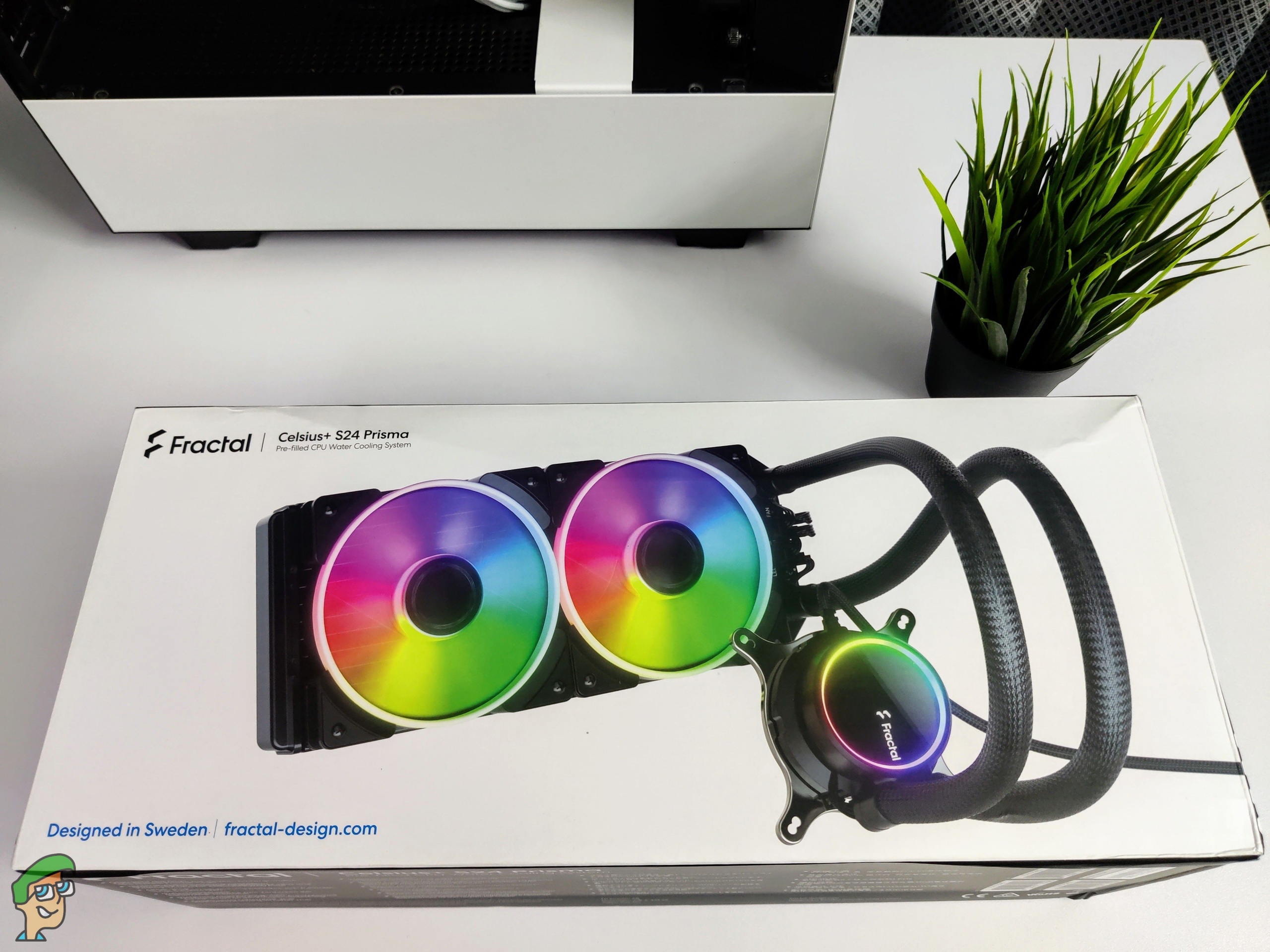
The unboxing experience is quite simple and straightforward. It’s always nice to see how much attention to detail Fractal Design gives to its products. The cardboard box arrives in a two-tone black/white finish, with a few accents here and there. It fits in perfectly with the company’s brand identity.
On the front of the packaging, a proud picture of the cooler is visible along with the fans. Both of these components show off the excellent Prisma lighting. The product name and Fractal Design logo are viewable in the top-left corner.
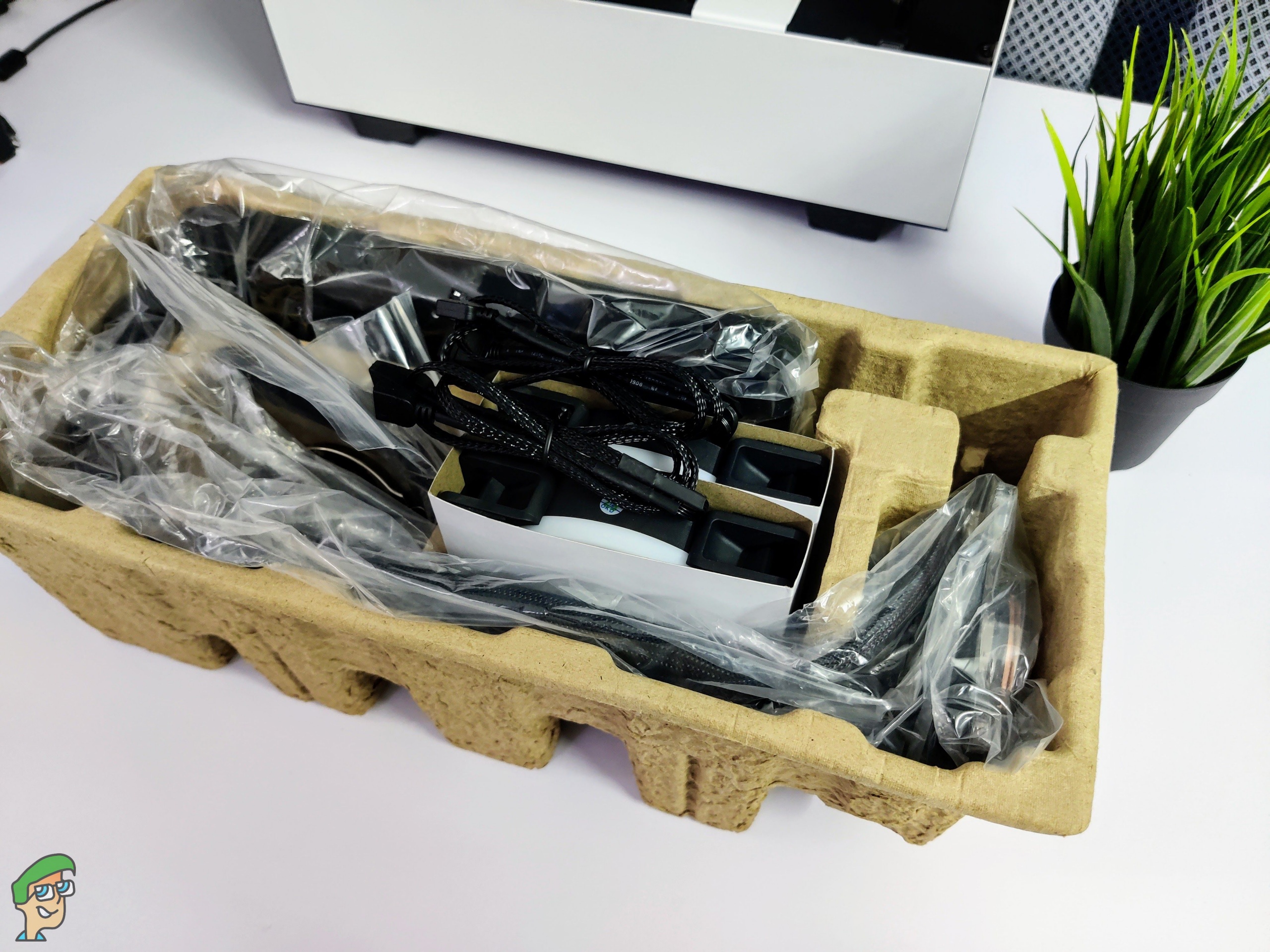
The sides of the box show off the usual cooler specifications, along with the radiator dimensions. On the bottom, we can read a brief description of the cooler written in multiple languages. The rear side features a monochromatic figure of the cooler, along with a brief summary of all the main features.
After you crack open the box, you’re greeted by a soft cardboard tray. Plastic bags protect the cooler and all the accessories inside. The Prisma Fans are tucked away nicely in white cardboard sleeves.
Apart from that, the packaging contains the following accessories:
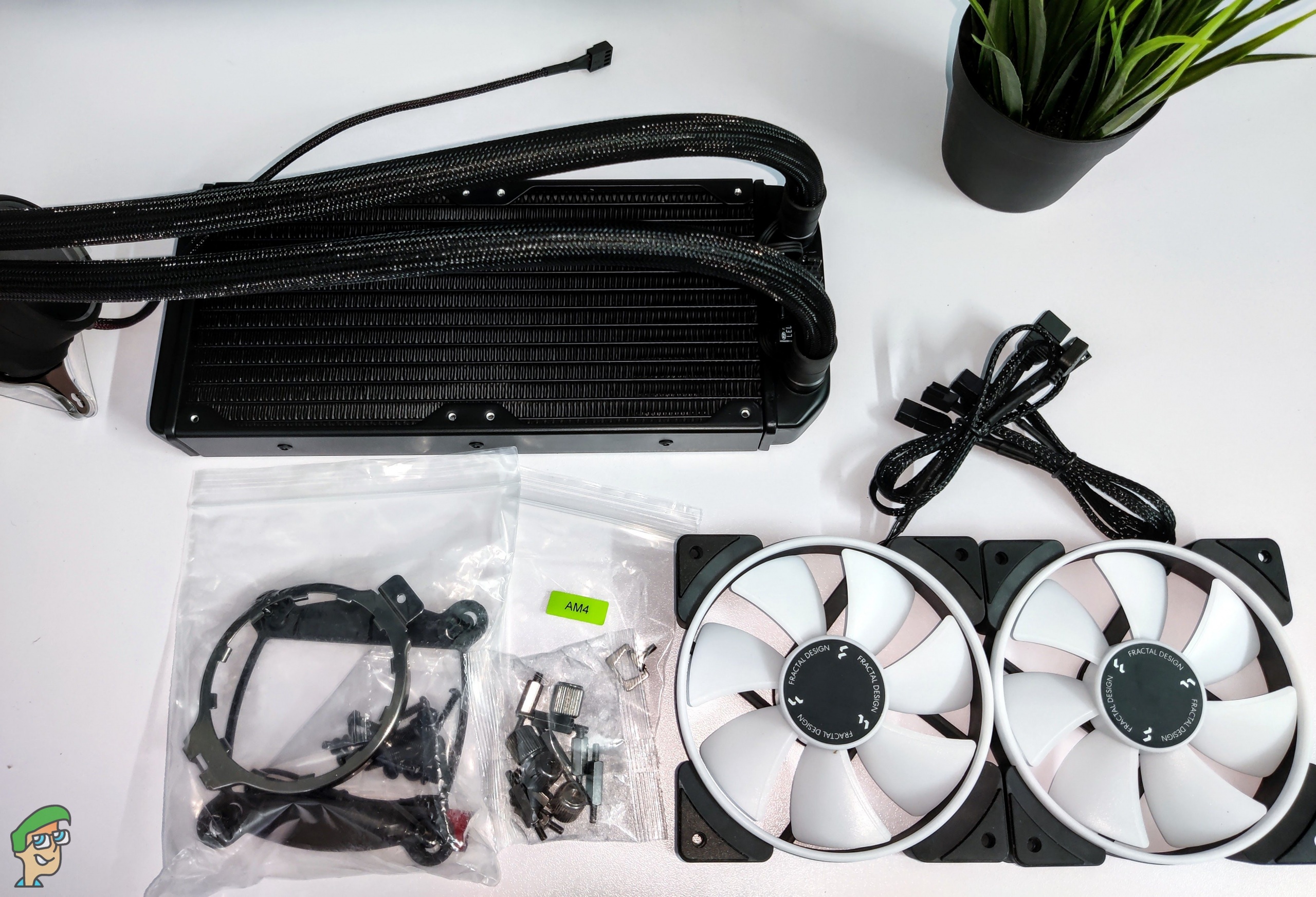
- User manual
- Pump and radiator
- Intel mounting standoffs
- Intel backplate
- AMD mounting standoffs
- AMD bracket
- 5V ARGB cable
- Radiator screws and washers
- Fan screws
- Thumbscrews
A Closer Look
All-in-one liquid coolers have gotten a bit redundant when it comes to design. A lot of them have the same looks and general layout for them. It’s a bit difficult for a lot of people to get excited about a new AIO in 2020. However, we were surprisingly impressed with the clever design choices found in the Celsius+ S24 Prisma.

Let’s have a quick look around the cooler before we talk about everything separately. The S24 Prisma uses a six-generation Asetek pump with a ceramic shaft and ceramic bearing. In the name, the S24 means that the radiator size is 240mm. This AIO is also available in 280mm and 360mm variants. If you don’t need RGB, the Celsius+ Dynamic lineup is the same in terms of performance, for a lower price.
Of course, we’re looking at the S24 Prisma right now that has two gorgeous 120mm Prisma fans. These fans use long-life sleeve bearings, have a rated airflow of 85.71CFM, and a fan speed of 500-2000 RPM. The blades are white, which look aesthetically pleasing on their own. These blades and outer rings provide a consistent and soft RGB glow.
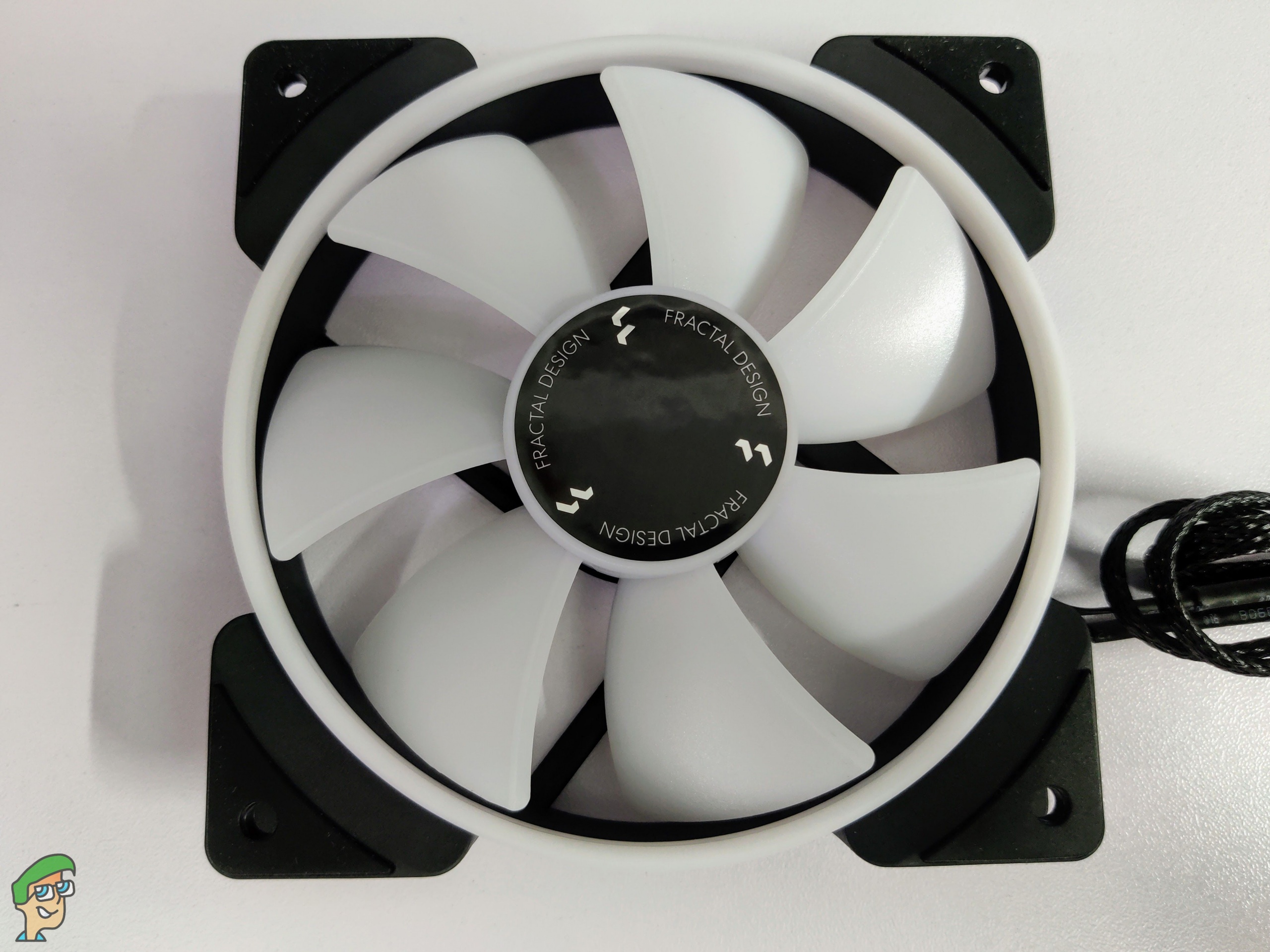
Regardless if you go with the Dynamic or Prisma series, the pump top is made of glass and has addressable RGB. The look of this pump is impressive and alluring. It has a matte soft-touch housing which is a joy to hold. Fortunately, it also feels quite solid in the hand, so we’re not worried about durability. The cable management is also quite smart. The pump sports articulating elbow fittings which is going to help you mount the radiator anyway you like in your case, more and more AIOs need to have this feature built-in as I feel like this is a mandatory thing for a water CPU cooler.
Moving on, the 280mm aluminum radiator feels solid and looks like it can handle a lot of abuse over time. Both the body and fins use aluminum, and the fittings use plastic material. Nothing out of the ordinary, but quite solid overall.
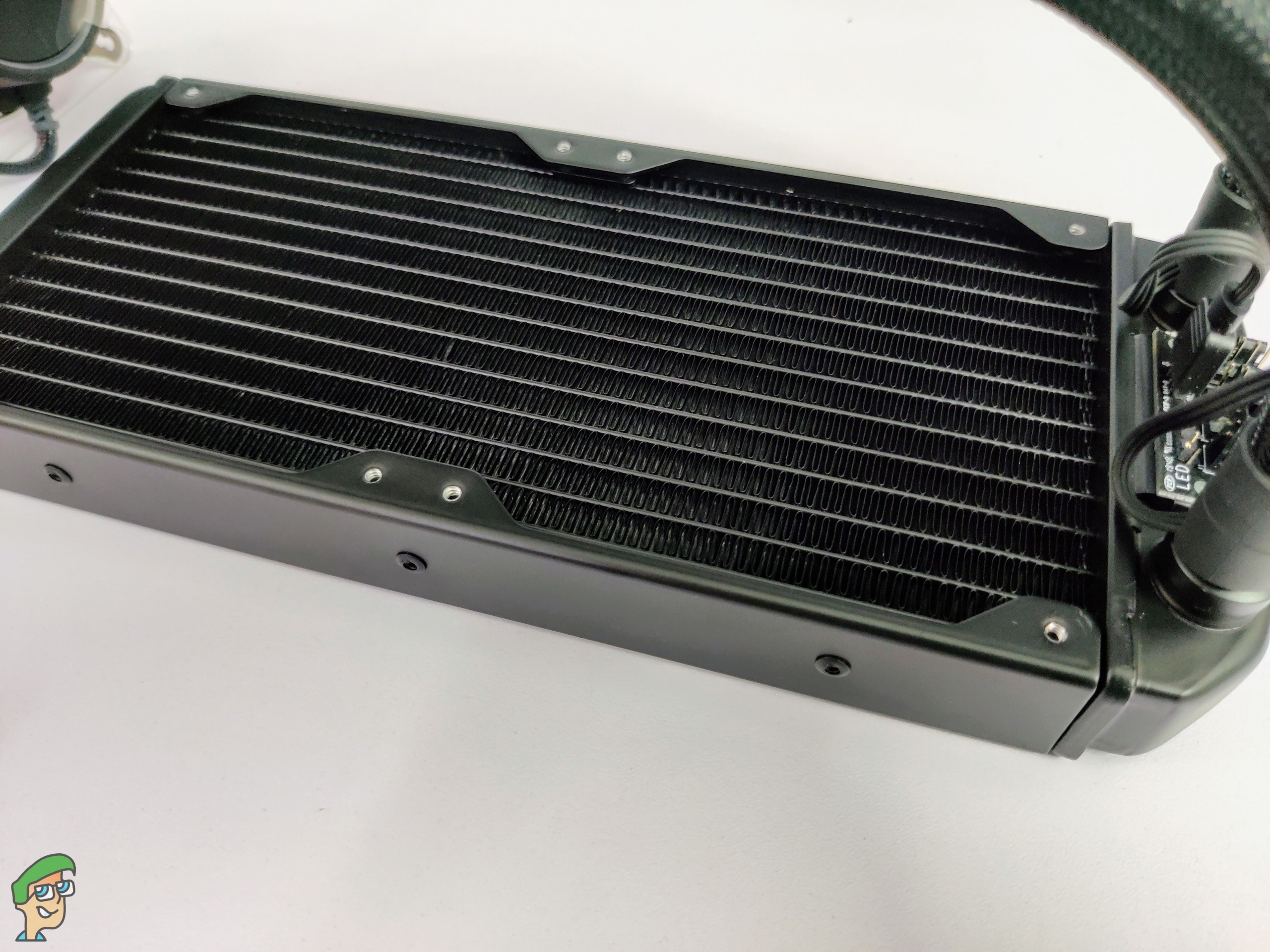
The fan hub is mounted in a very clever place, which is right between the tubes of the cooler. It has four fan headers and two A-RGB headers. The hub is right in the front and remains out of sight and our mind. Talk about clever design.
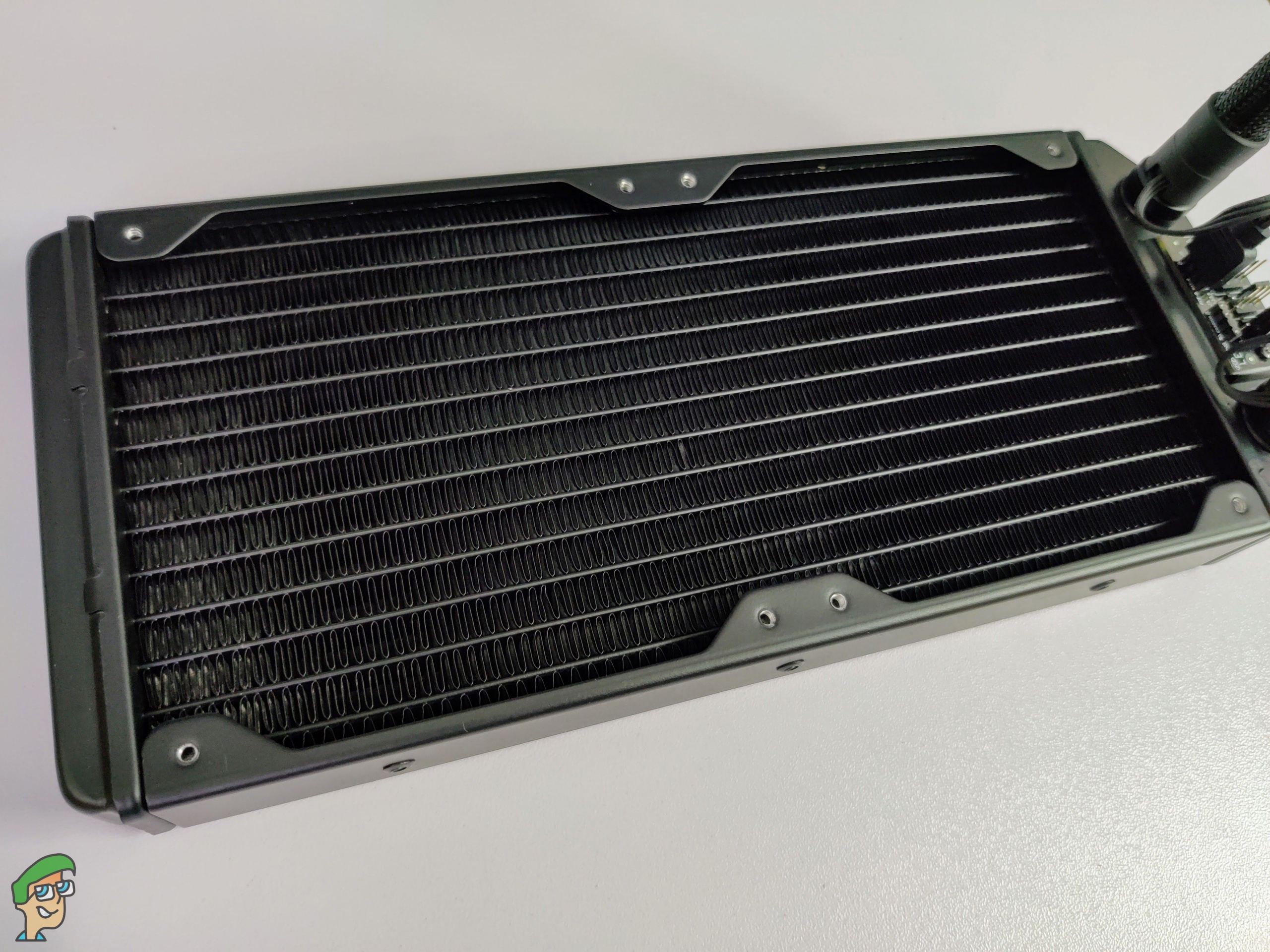
Other than that, the tubings are quite thick and that is always a great thing. We’re not worried about the failure rate and long-term durability for this cooler. We’re fans of how this cooler looks, but we’re not done yet. As we said in the intro this cooler does have a few tricks up its sleeve.
Clever Design Choices And RGB
Minimalism and clever design choices are two of the many reasons why this cooler is so popular. We’ve already talked about the clever placement of the fan hub on the radiator. By the way, this hub does have headers for the Prisma fans. That’s helpful if you want to go with the Dynamic S24 and upgrade the fans later. With all that said, the standout feature here is the minimal wiring. You can enable all of this greatness without an internal USB header, no SATA power leads, and no software.
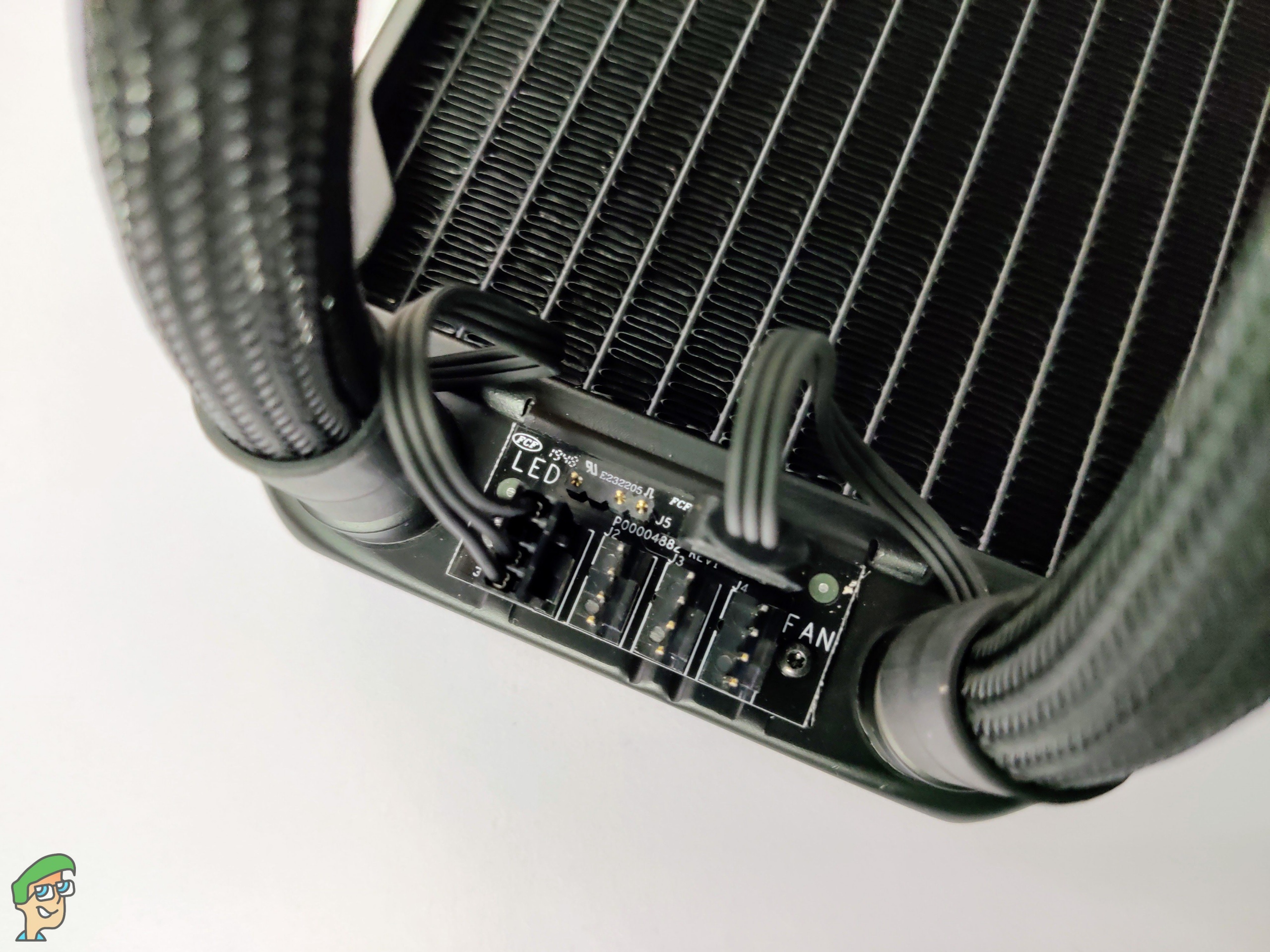
Well, you could do that with a few AIOs, but you’d lose the lighting effects. However, the S24 Prisma does it all with a single braided PWM plug that comes from the pump top. This is just to power the pump. If you don’t want to plug in an ARGB cable, the logo will light up white surrounded by a white ring.
An ARGB cable can be plugged into the underside of the pump that is compatible with all major motherboard lighting controls. This cable also allows you to control the ring, and the logo remains white. We’re quite fond of this style to be clear.
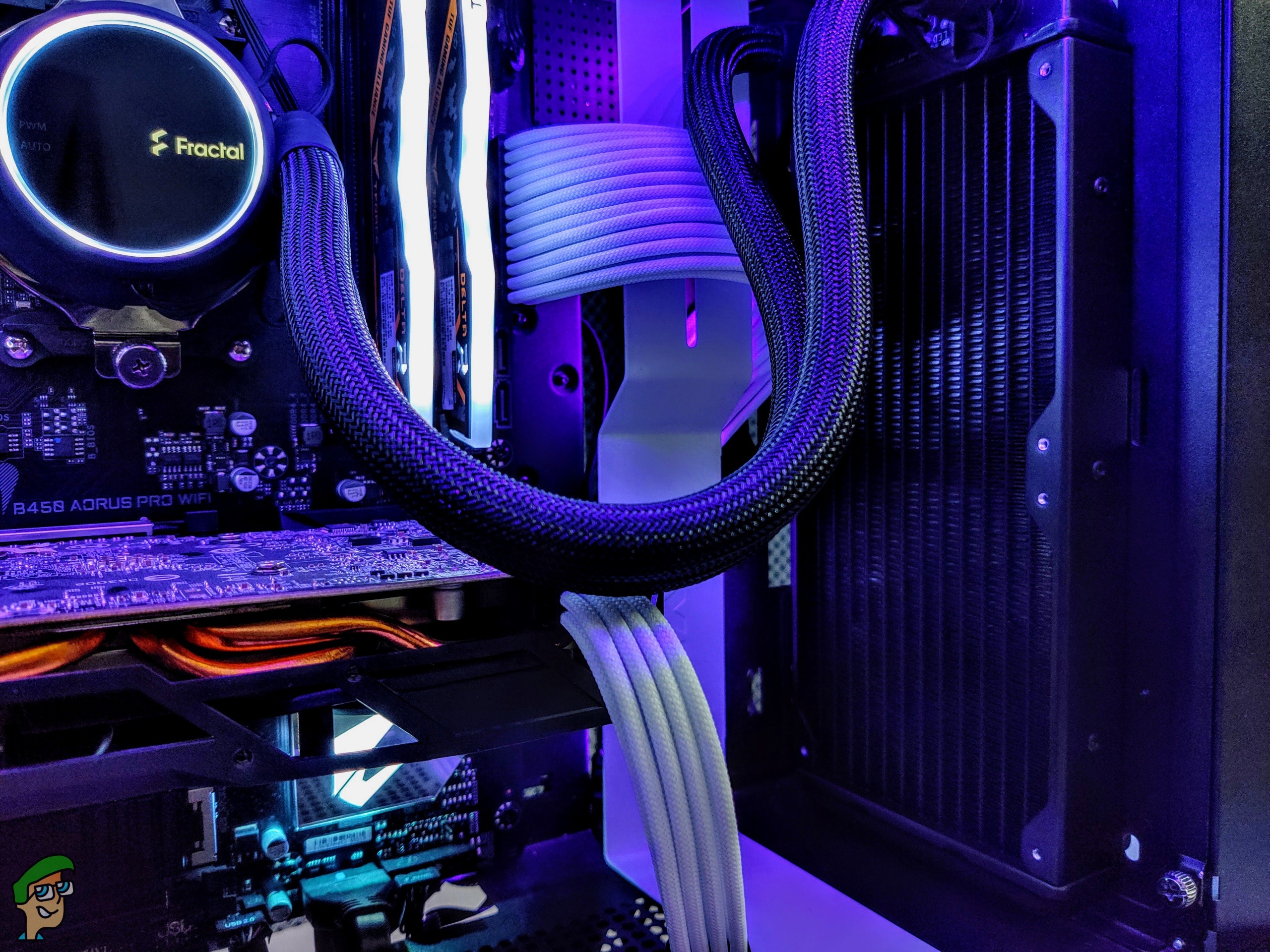
This single ARGB cable also provides pass-through for RGB information to the fan hub itself. Does it all sound complicated? Probably. But once you get it in your hands you’ll realize what we’re trying to say here. The entire installation process is very clean and simple. This also allows us to have thicker than usual tubing.
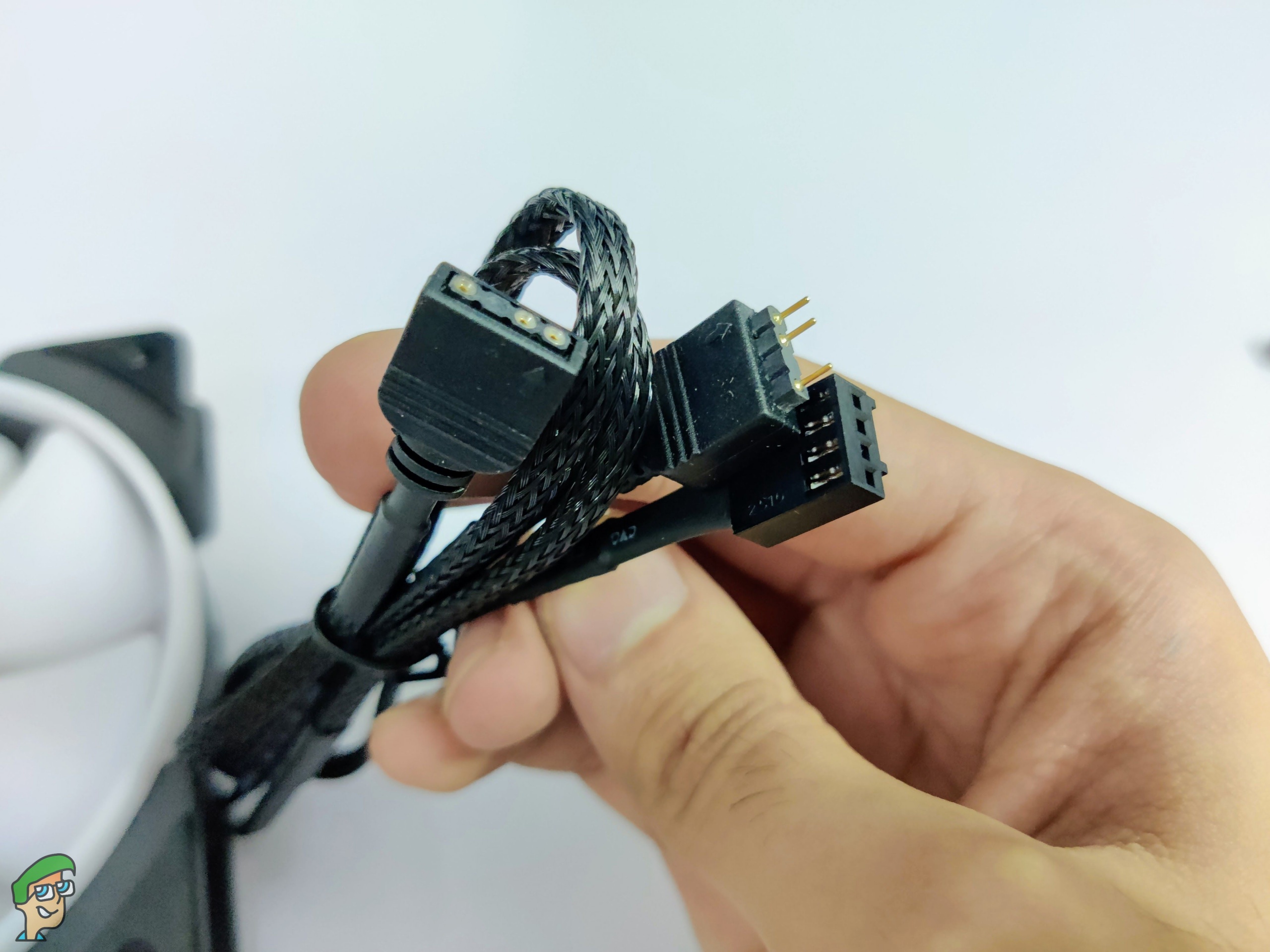
However, our favorite thing about this unit is the complete lack of software. We’re tired of seeing buggy and unfinished software that you are required to use to control simple lighting effects. If you have several peripherals, this can quickly get frustrating. With this cooler, you can get just control all from your board.
You might think that this is not a big deal in the long run. However, if you’ve encountered buggy and frustrating software in the past, you’ll appreciate this cooler even more. It’s also one less component in your PC that conflicts with RGB or other peripheral control software. The zero requirement for software is also a win for Linux users.
Installation
Installing this liquid cooler is quite easy and will be relatively familiar to many folks out there. First off, you’ll have to put the fans on the radiator, as they do not come installed from the factory. However, it is quite an easy process. Just screw in the fans tightly, and plug in the cables into the convenient fan header on the radiator.

From there on, the installation on both AMD and Intel is simple. Remove the previous cooler, clean the thermal paste, mount the new bracket, and install the new cooler. After that, you only need to attach the cooler to your case.
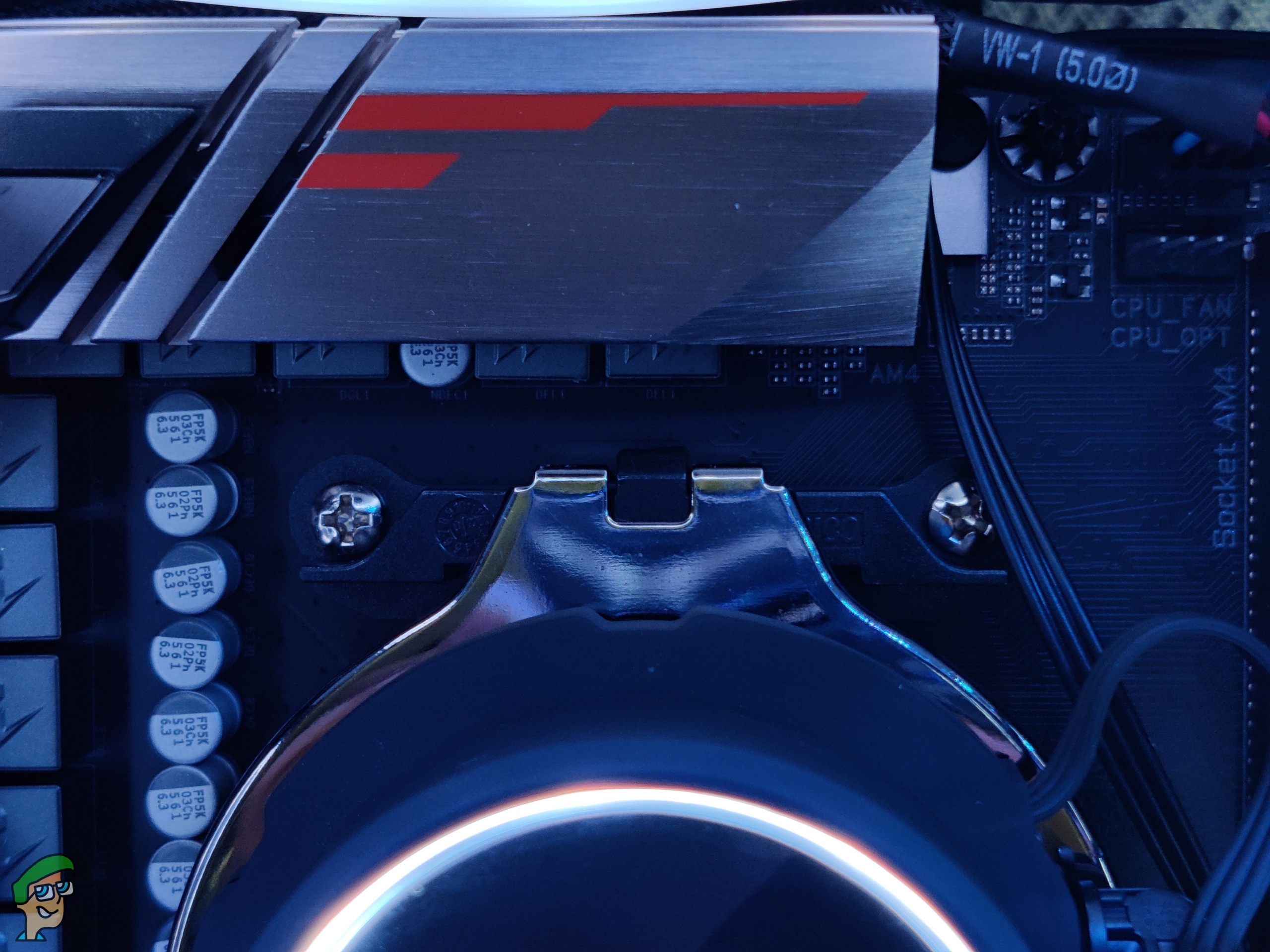
The AMD setup can be a bit of a challenge since it’s not your usual four posts setup. One hassle we faced during the installation in our scenario was the AMD bracket screw, it takes an absurd amount of pressure and strength to be screwed it in the given mounting hardware. This could be better, but it’s not the worst we’ve seen.
Auto vs PWM Mode
Before we move on to our in-depth testing and results, we need to quickly gloss over the two modes available with this cooler. Since it doesn’t require any software, you can flip between these modes by physically rotating a control ring on the pump top itself. As you can probably guess, the auto mode allows for quieter operation with a designated pump and fan curve.
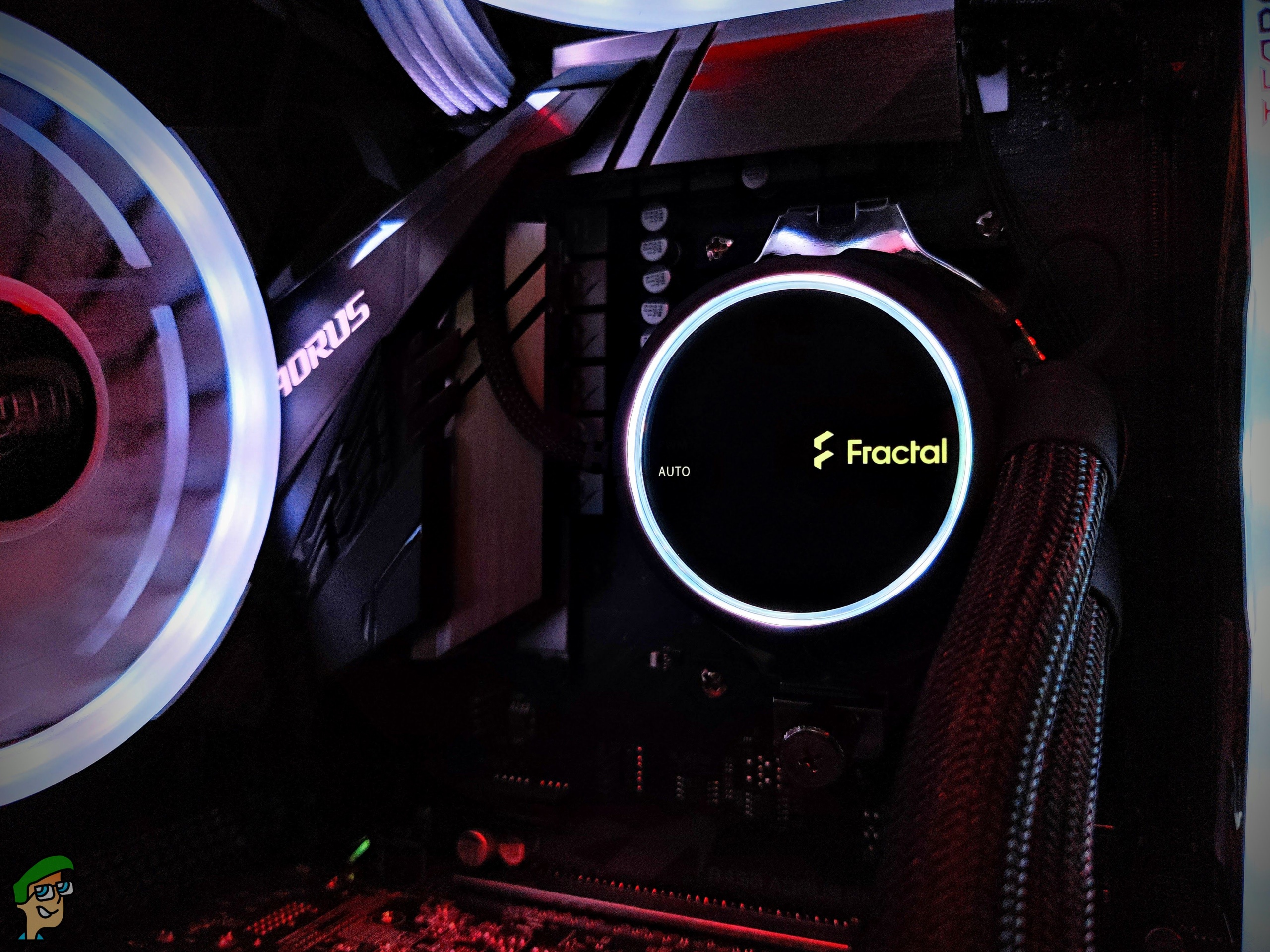
The PWM mode allows you to set custom separate curves for both the pump and the fans themselves. Obviously, if you’re looking for the best possible performance, you should stick with PWM mode. However, if the acoustics are something you worry about auto mode could be beneficial.
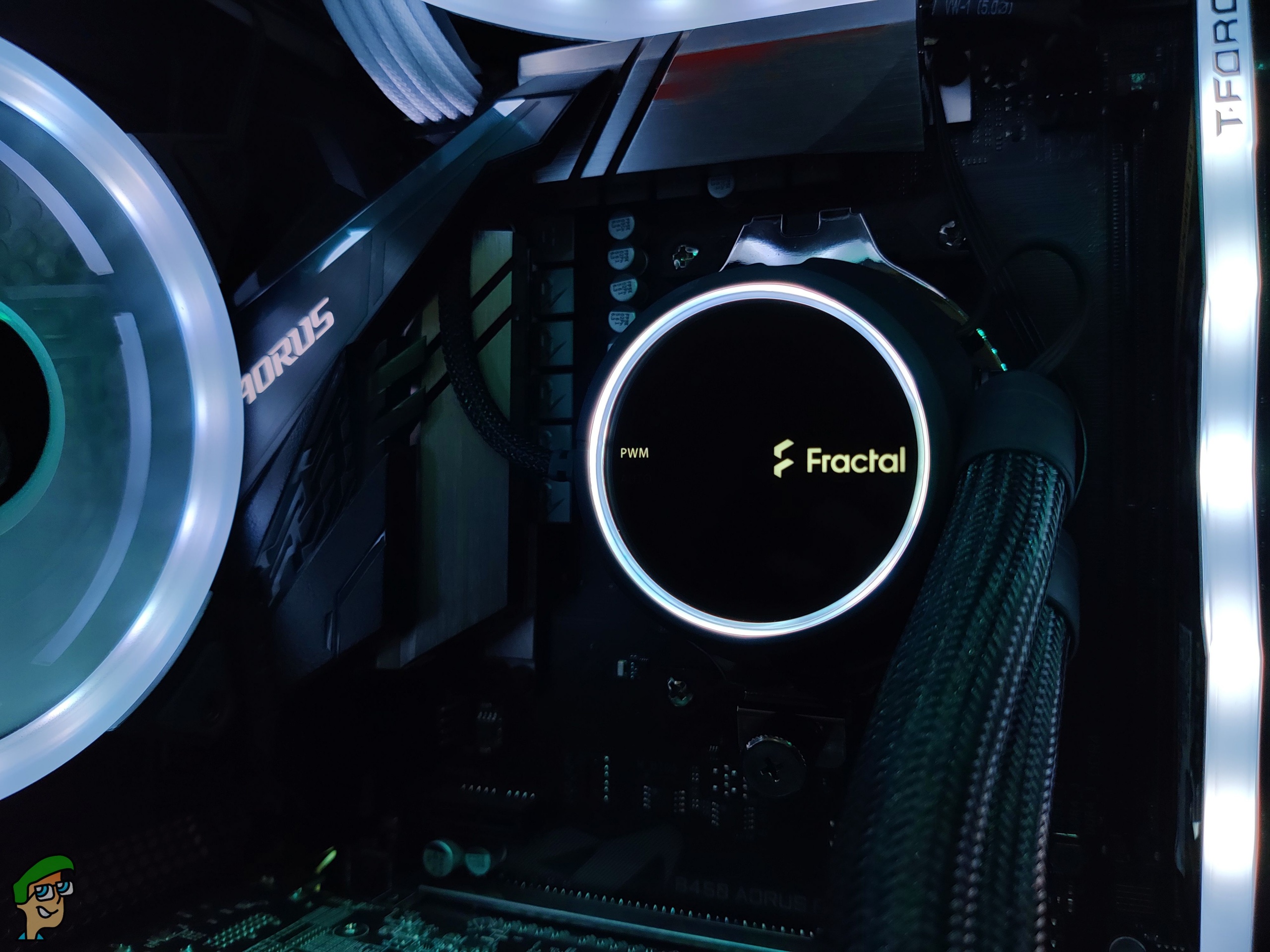
Lastly, We did not test the Celsius+ S24 on auto-mode in our thermal tests (below) as it is an additional feature incorporated by Fractal Design in this AIO. The Auto-mode could also hinder our consistent testing methodology ultimately making the results inconsistent. We’ve strictly stuck to the default PWM fan curve of the B450 Aorus Pro WIFI, on which all of the other coolers were tested for consistent benchmarks.
Test System
- CPU: AMD Ryzen 5 3600
- Motherboard: Gigabyte B450 AORUS PRO WIFI
- Thermal Paste: Factory-Applied
- RAM: TEAMGROUP T-Force Delta RGB DDR4 16GB (2x8GB) 3200MHz CL16
- GPU: Gigabyte AMD RX 570 4GB
- Storage: Kingston A2000 NVMe PCIe SSD 512GB M.2
- Power Supply: Corsair RM750x
- Case: NZXT H510i
Testing Methodology
Our testing methodology consists of mimicking the way the Celsius+ S24 Prisma (or any other CPU cooler) would be installed in an end user’s system. We test all of our CPU coolers inside of a PC case with positive airflow. For our load tests, we run Cinebench R20 on a constant loop to put the CPU in full stress thus imitating the real-world workloads of an end-user. We also test our Overclocks’ stability through Prime95’s extended tests with AVX Enabled for Ryzen CPUs for at least 10 hours and more. Idle tests results are taken at least 10 minutes after the system has booted up with a handful of day-to-day programs opened up in the background, again simulating the real world idle state of a PC. For noise tests, we place our RISEPRO Decibel Meter very close to the PC case in order to gain accurate idle and load results. In every test, the CPU fan curves are set to default for accurate measurements. The radiator was mounted in front of the case and the orientation of the fans was set to intake for a positive airflow environment in the case. Lastly, we test all of our CPU coolers at a controlled ambient room temperature of 26 °C.
Note: Our ambient noise levels (52dBA) were a bit higher than usual due to our testing environment’s ventilation system. Thus making the noise tests of the cooler seem higher than usual.
Thermal Performance – Stock Performance (PBO Enabled)
Looking at the thermal performance of the Celsius+ S24 in PWM mode, it’s clear that the AIO is capable of providing absolute bonkers performance. Our Ryzen 3600 consumed around an average of 75-80W at 1.347 core voltage which is definitely above the factory specifications of the chip. While AMD’s Precision Boost Overdrive (PBO) does help in boosting the CPU clocks, it surely doesn’t do that well in controlling the core voltage of the CPU. Considering that our Ryzen 3600 was running at an obnoxious core voltage reaching higher TDP than it is supposed to, the S24+ Prisma still had zero issues in cooling the chip down with excellent performance, even beating the R1 ultimate and the NHD15 by a reasonable margin. The results can be seen below.
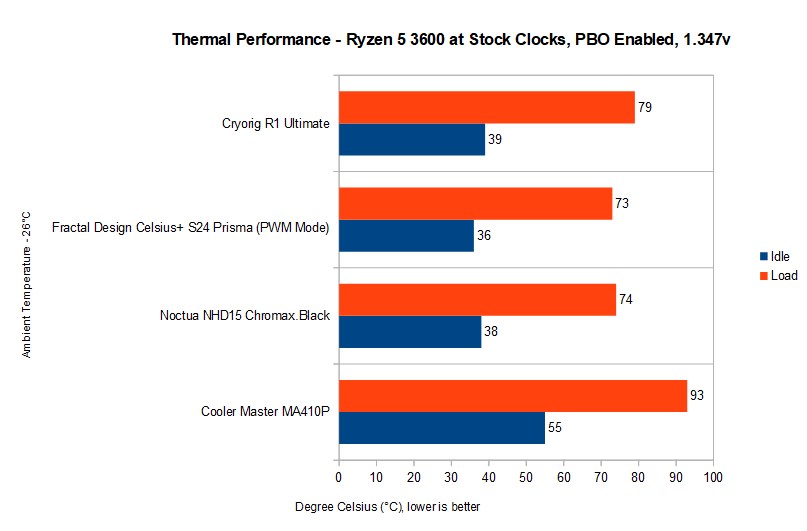
Manual OC Performance (Undervolt)
The stock performance of the Ryzen 3600 clearly showed us that the CPU was reaching an absurd amount of TDP and Core volts because of PBO. It was inevitable that undervolting was needed. After finding the sweet spot at 4.3GHz and 1.212v, the Celsius+ S24 showed us how overkill the AIO can be for a chip like the Ryzen 5 3600. The results can be seen below.
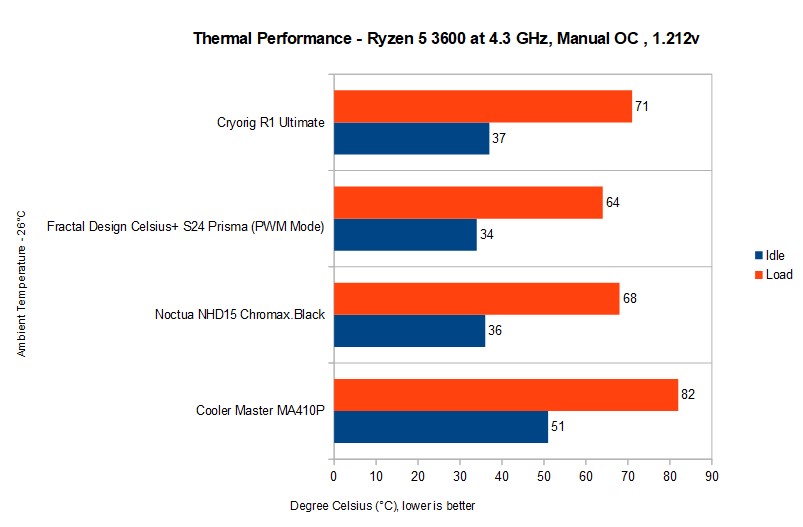
Acoustic Performance
In the acoustics department of the Celsius+ S24 things get a little bit noisy, but just a little bit. The Celsius+ S24 performed adequately, although we weren’t expecting the noise results to be great because obviously, looking at the other air coolers in our tests they definitely have an advantage over the S24 because of the absence of a water pump.
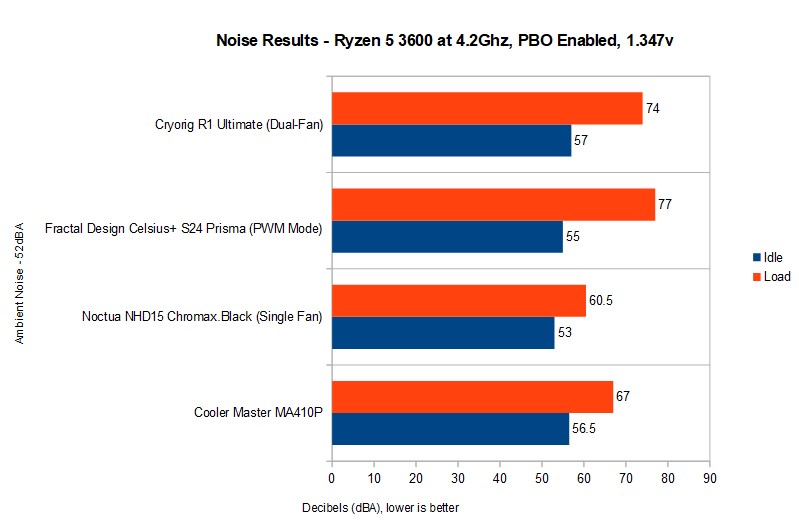
Even with a water pump and 2x120mm fans mounted on the radiator of the AIO, the S24 produced almost the same noise as that of a dual fan/tower air cooler (Cryorig Ultimate R1). This concludes that even in the PWM mode which is supposed to be loud, the S24 doesn’t fall behind much while maintaining the thermal performance way above its competition. Lastly, as expected the manual OC benchmarks were as impressive as they can get. The results can be seen below.
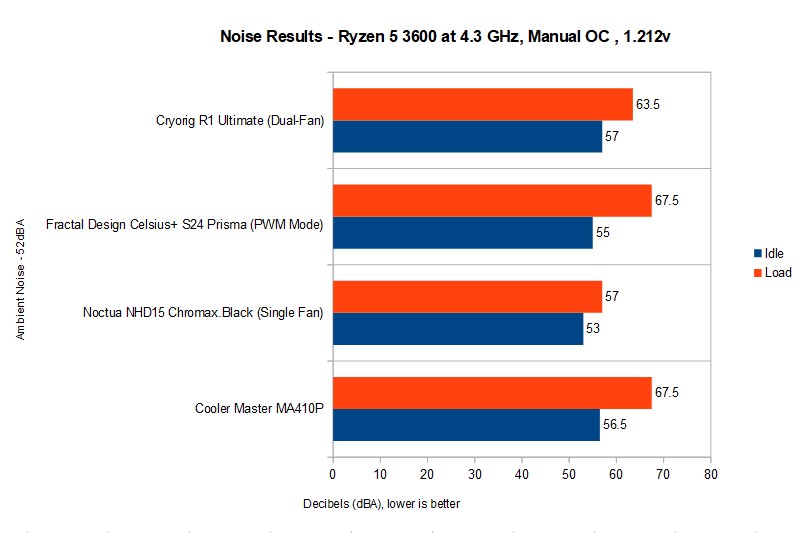
Conclusion
Overall we are quite impressed with the performance of the Fractal Design Celsius+. It is without a doubt one of our favorite all-in-one liquid coolers in 2020, and we don’t say that lightly. In reality, it also happens to be a breath of fresh air. A lot of AIOs focus on looks and gimmicks these days. It’s not surprising to see why there is definitely a demand for flashy designs in the gaming community.
However, those who know a thing or two about great performance and minimal looks will appreciate this cooler. It comes in at a competitive price, has great lighting features, minimal and clean cable management, and impressive performance. It also looks the part, and you can’t call it boring with that classic Fractal Design look.

We also appreciate the fact that it has plenty of clearance for both the RAM modules and the GPU. This is a problem with beefy coolers that offer high-end performance. Construction is also solid overall, as everything feels premium and well-built. To conclude, the AM4 Installation could be better but the cable clutter less installation makes up for it, to be honest. The auto and PWM modes are also convenient. Noise results could improve but again our motherboard’s stock fan curve was a bit notorious as well. So, we wouldn’t say the Celsius+ S24 Prisma has any deal-breaking flaws that will drive potential customers away. If you’re thinking of putting together a high-end or even mid-range gaming PC, your eyes should be on this excellent cooling unit. We have zero problems recommending it.
Fractal Design Celsius+ S24 Prisma
Best 240mm ARGB AIO
Pros
- Pure ARGB lighting
- All-in-one fan hub for ARGB lighting and PWM fans
- Solid Performance
- 2x120mm RGB Fans Included
- PWM and Auto Mode Rotatable Switch
Cons
- AM4 Installation could be better
- A tad bit noisier than the competition
TDP: N/A | Motherboard Compatibility: (Intel) 200, 1150, 1151, 1155, 1156, 1366, 2011, 2011-3, 2066, (AMD) AM2, AM2+, AM3, AM3+, AM4, FM1, FM2, FM2+, TR4 | Coldplate material: Copper | Tube length: 400mm

VERDICT:The Fractal Design Celsius S24+ Prisma is a near-perfect liquid cooler. The minimal wiring system proves that Fractal Design pays attention to detail. Performance-wise, this liquid cooler lives up to the expectations, and sometimes even crosses them. Aesthetically, it is one of the best looking AIOs out there. If noise levels were even better then this could have easily been the cream of the crop when it comes to liquid coolers. We highly recommend it regardless.
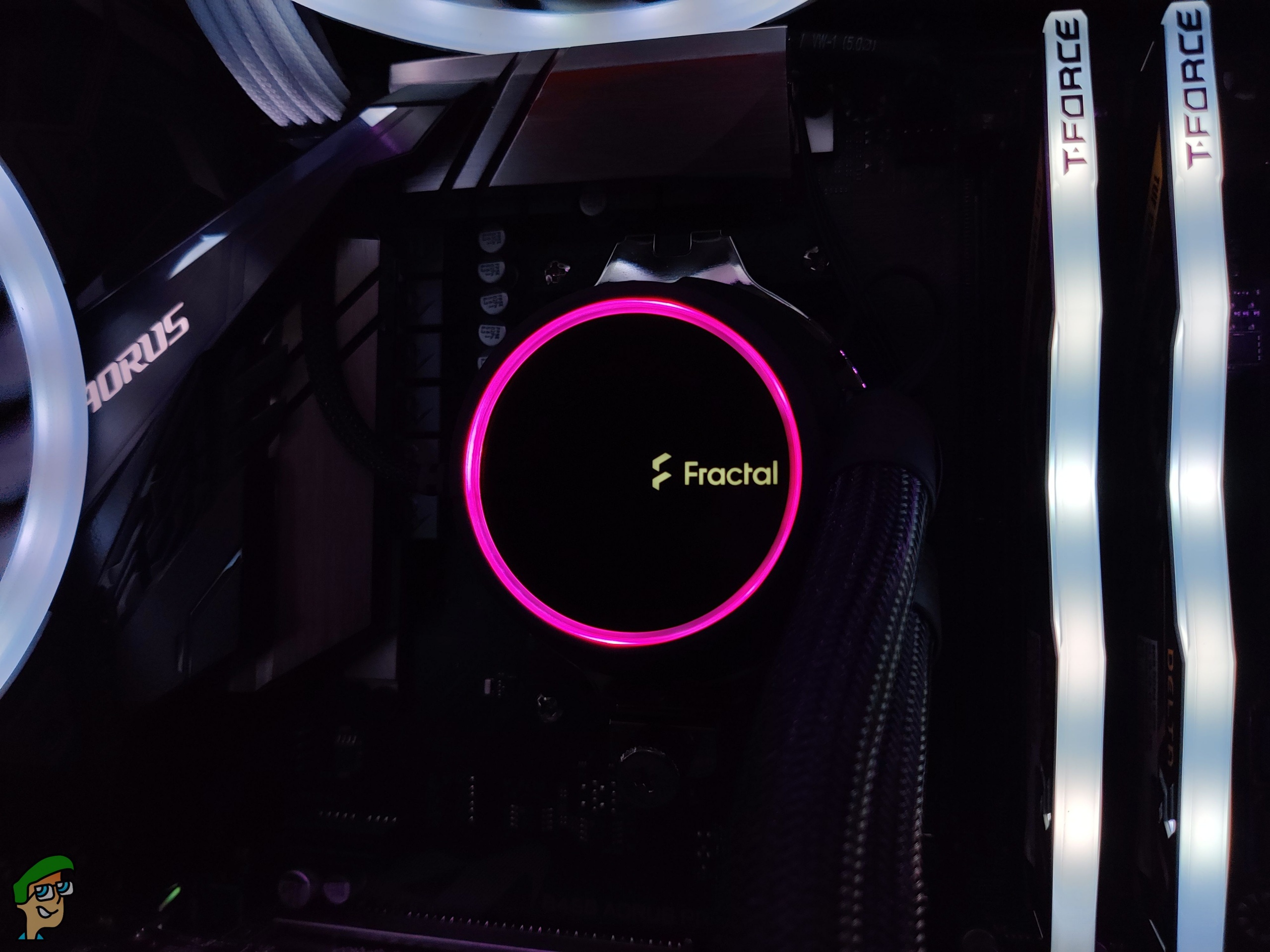
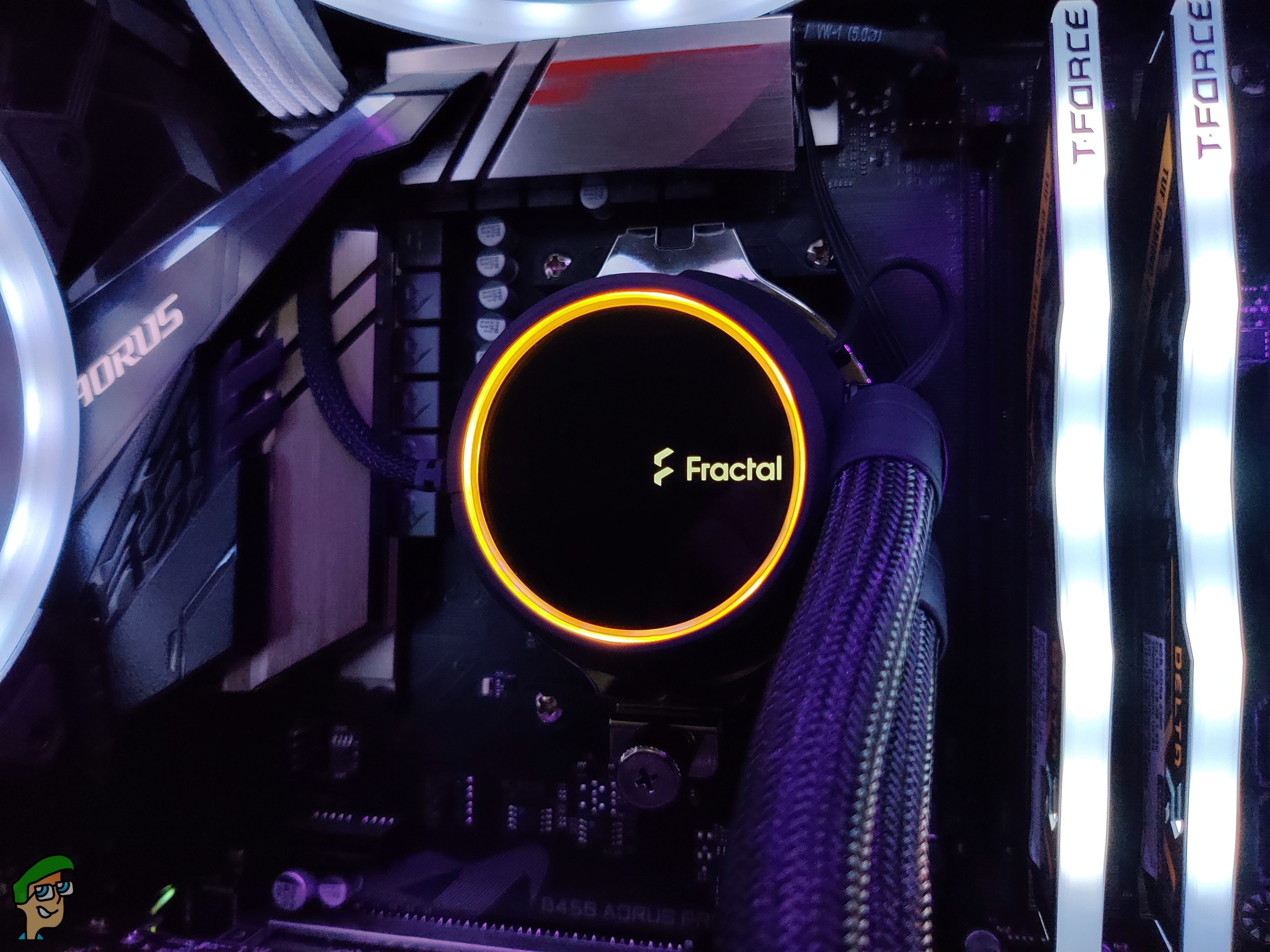
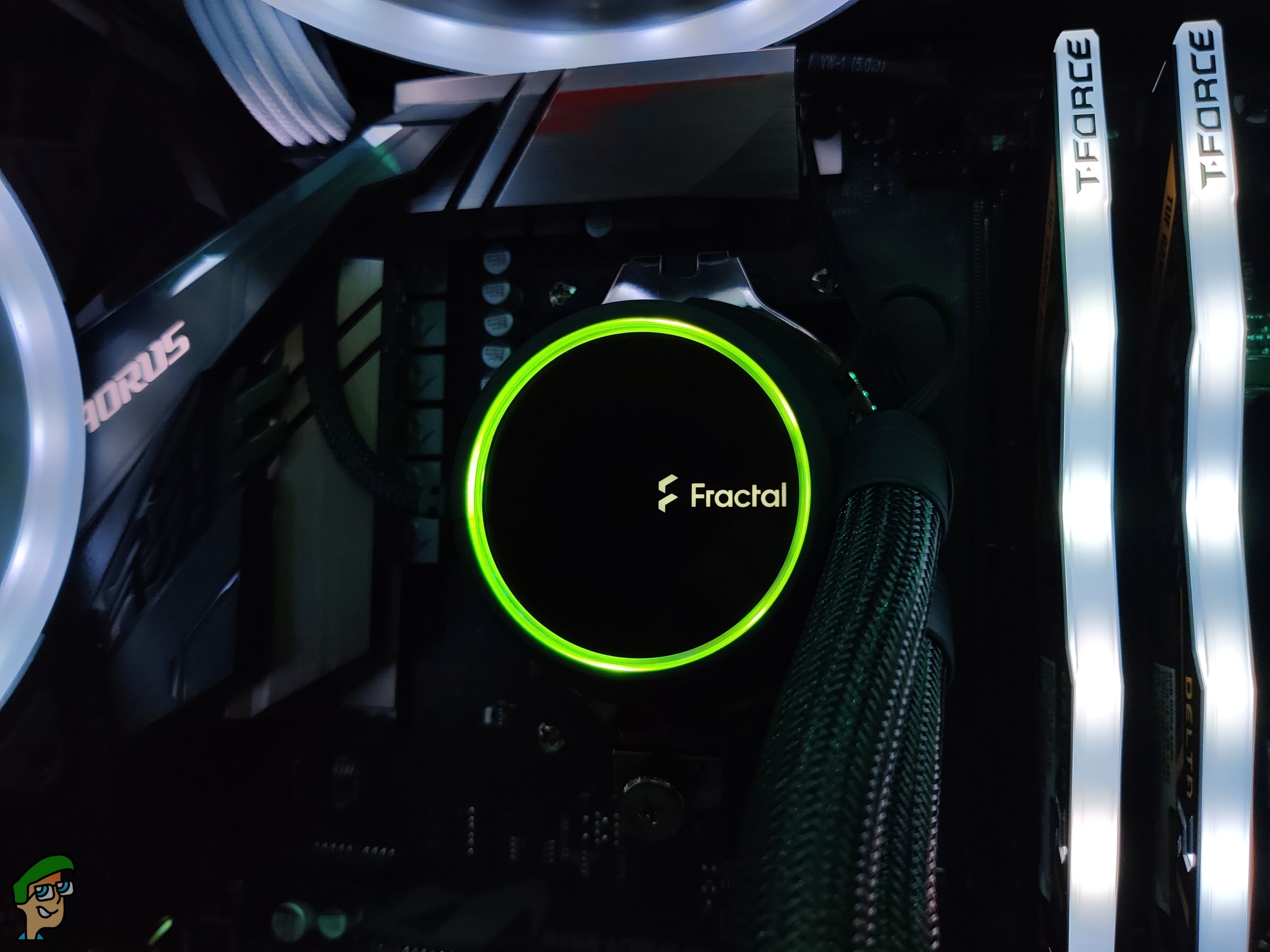
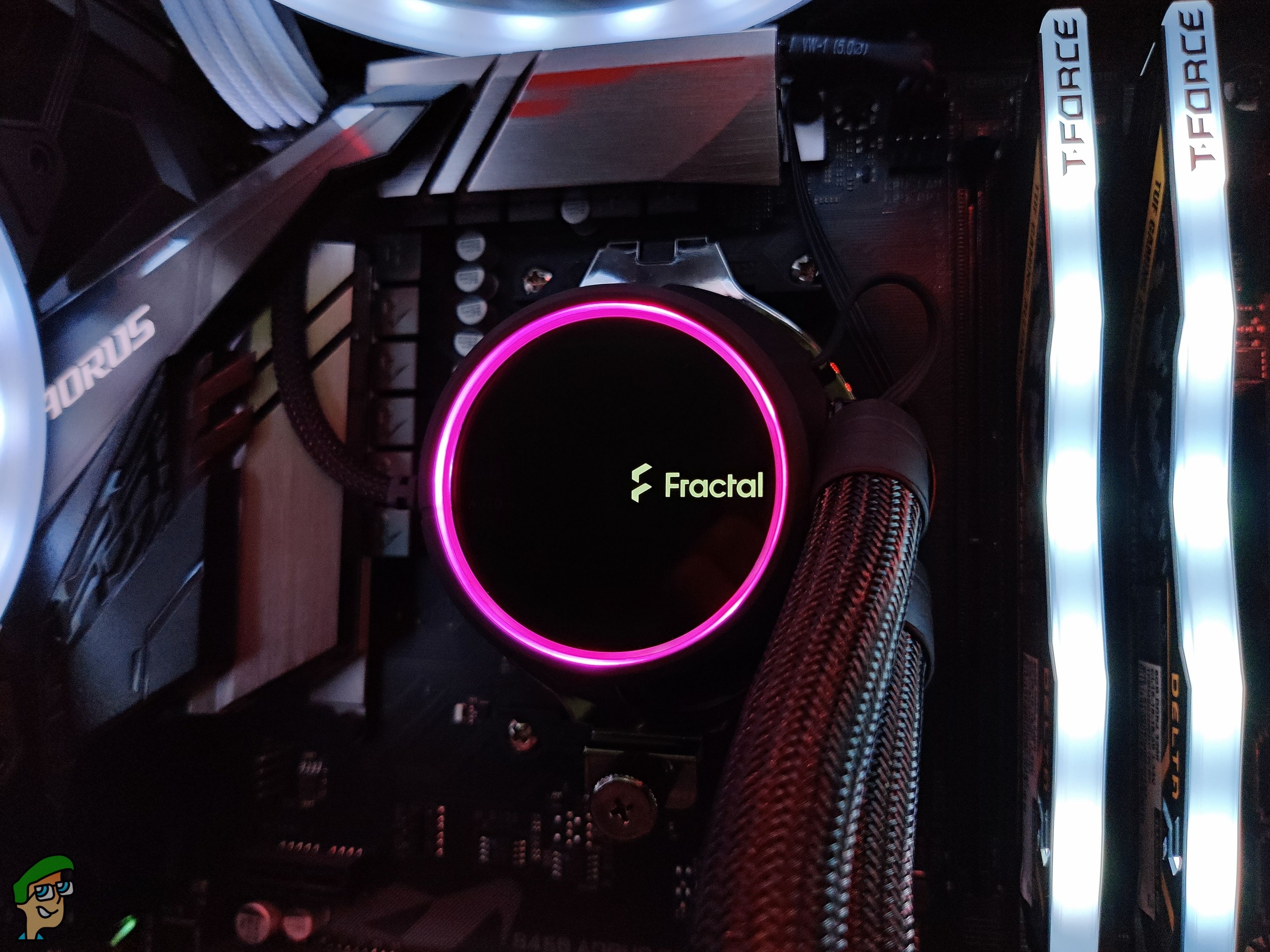
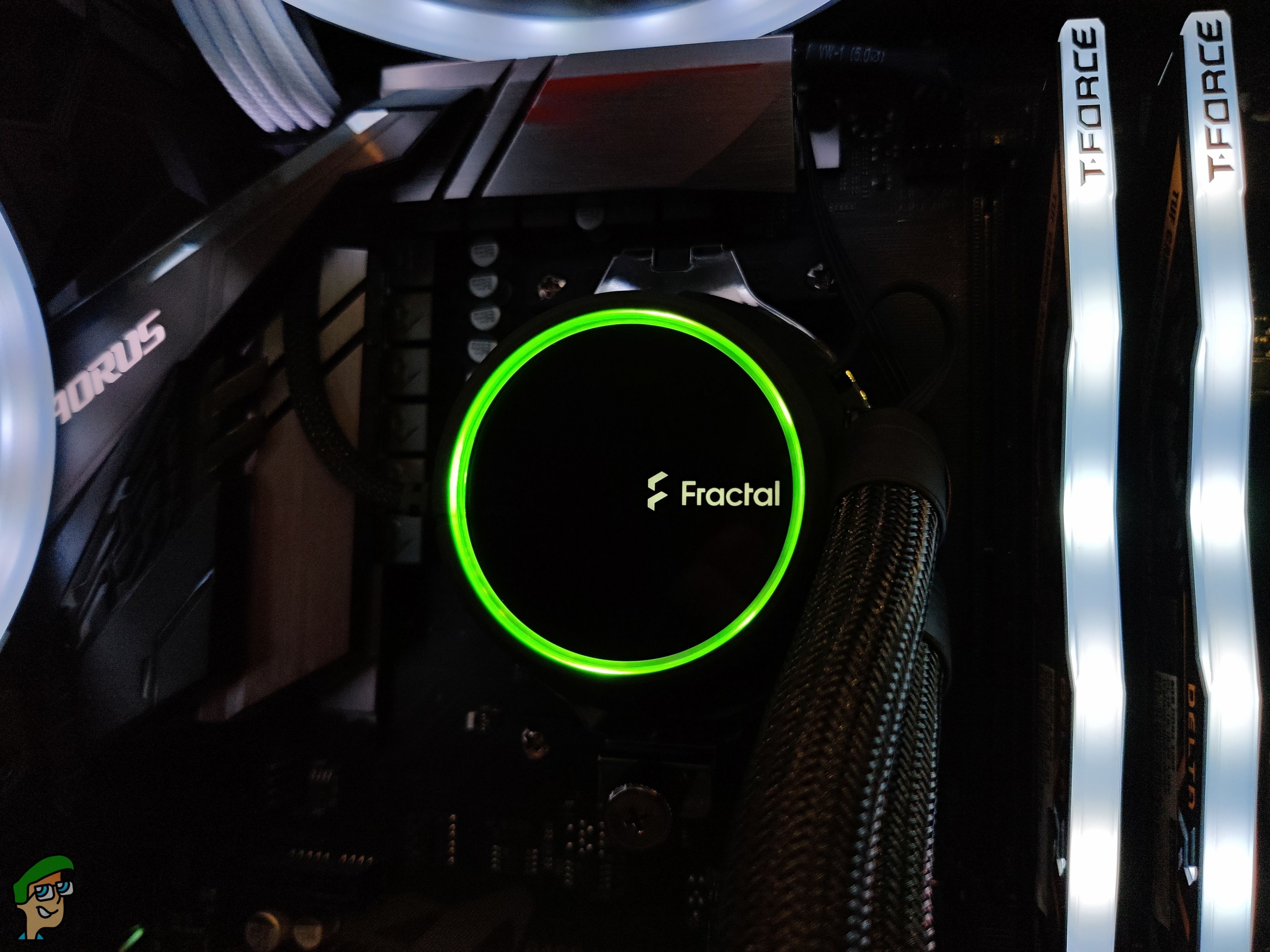
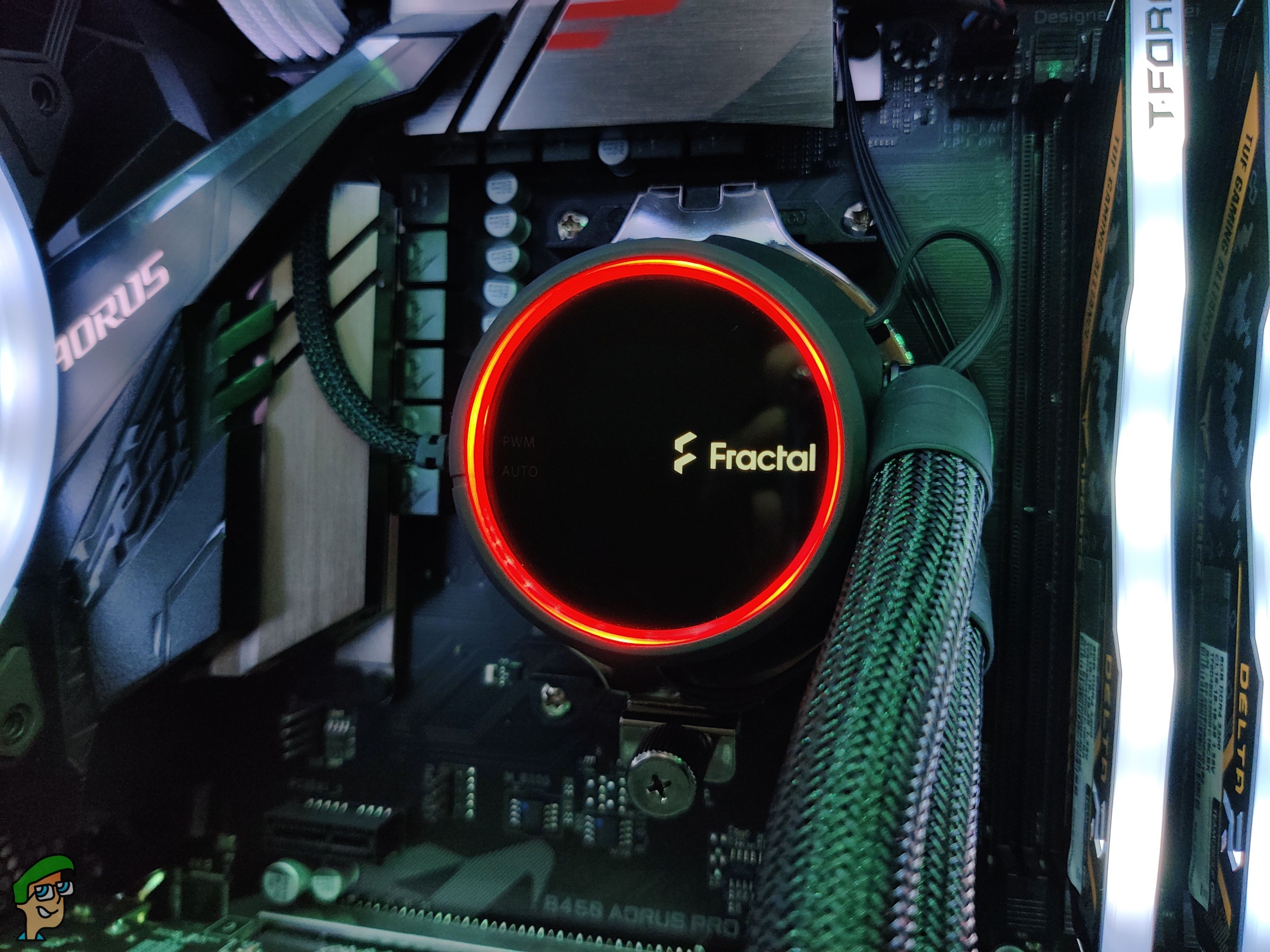
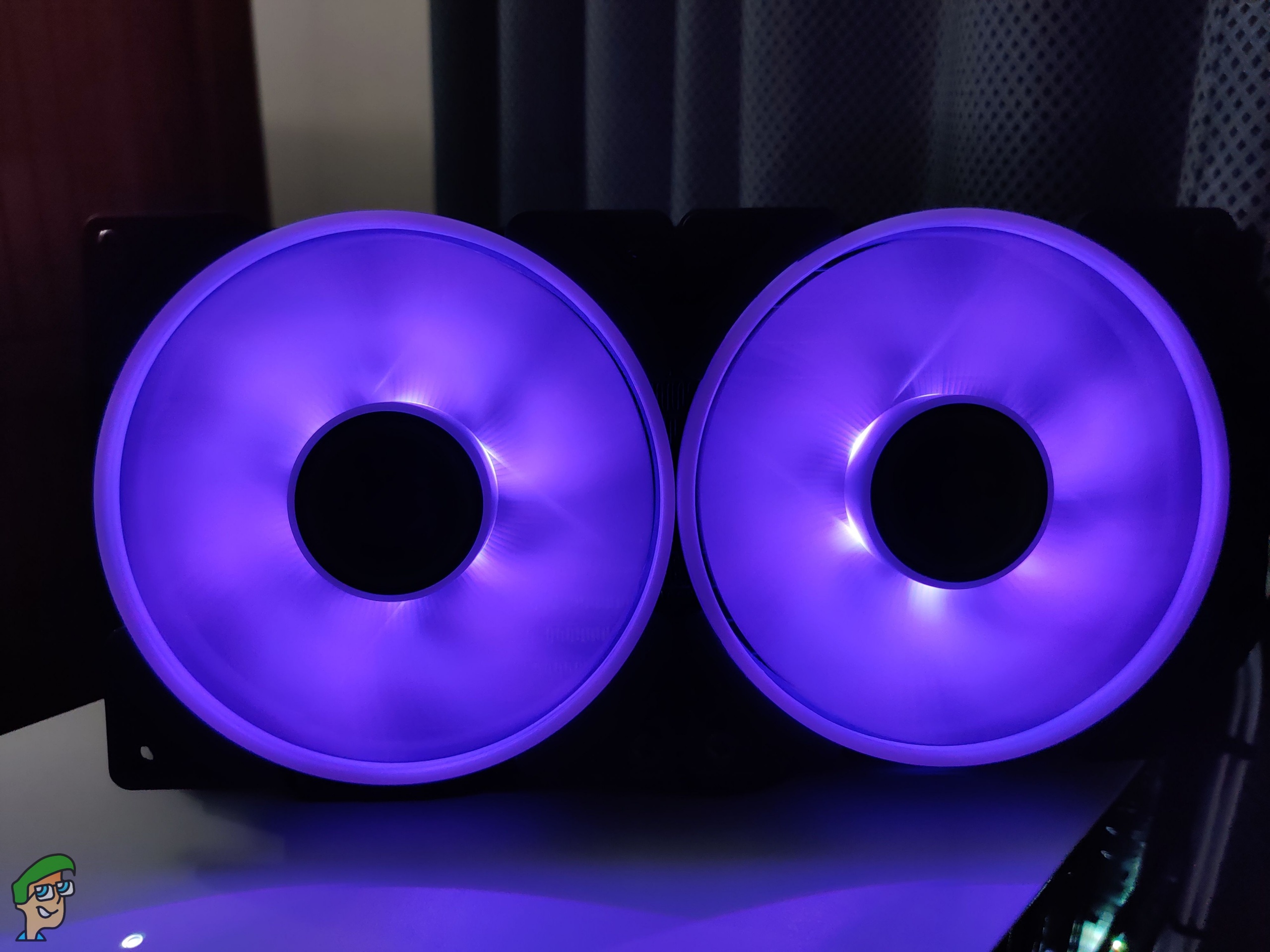
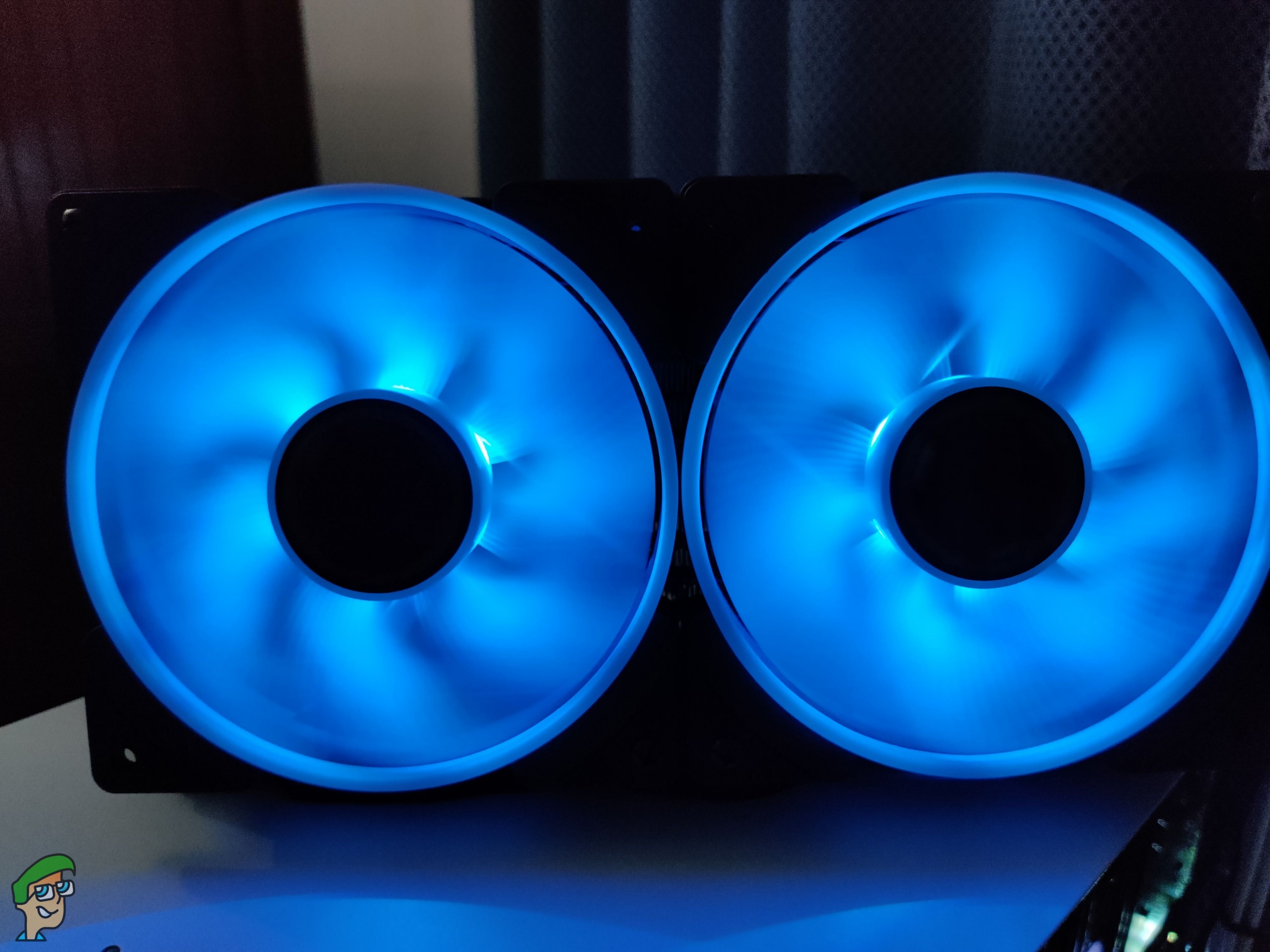
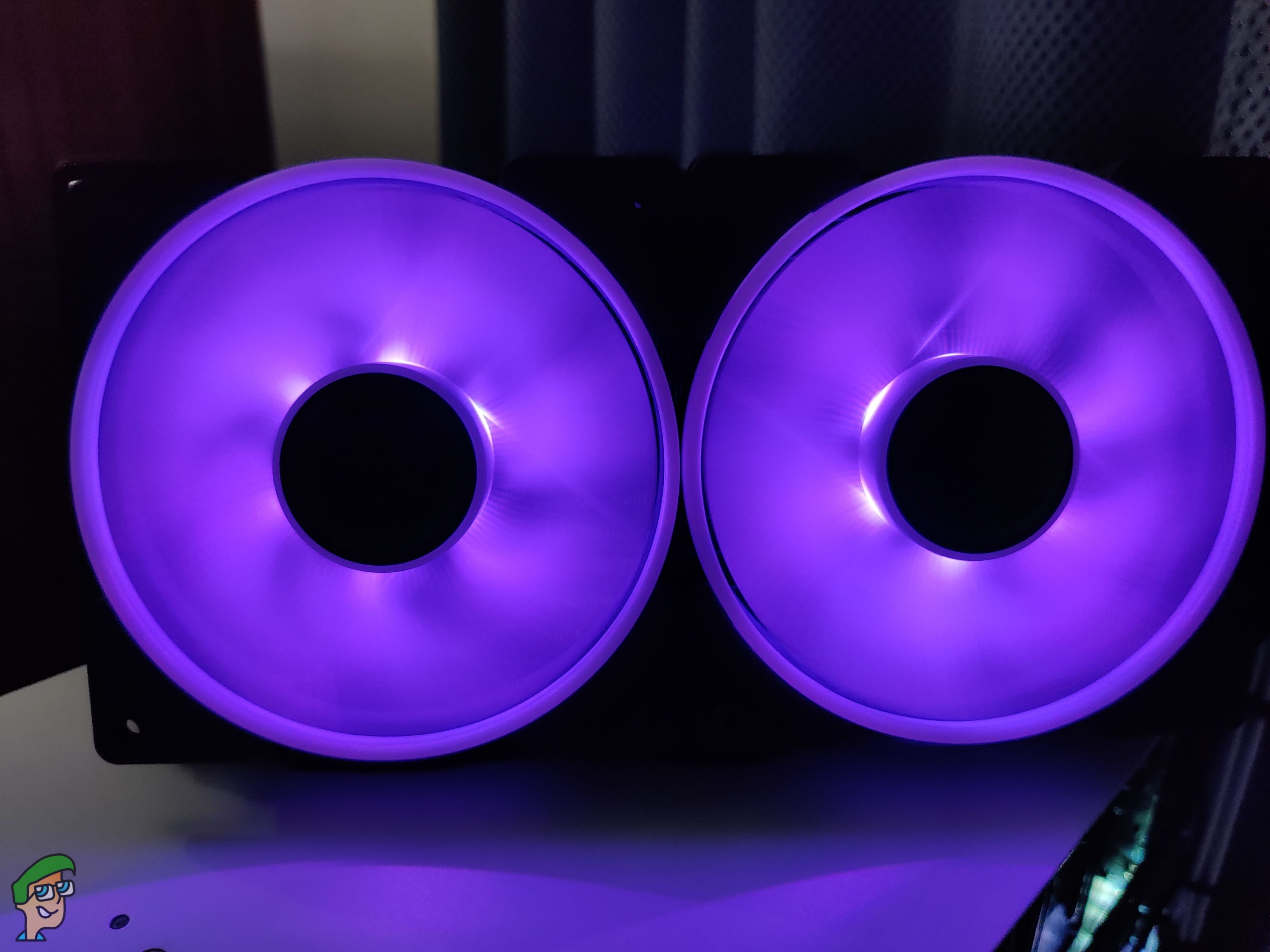
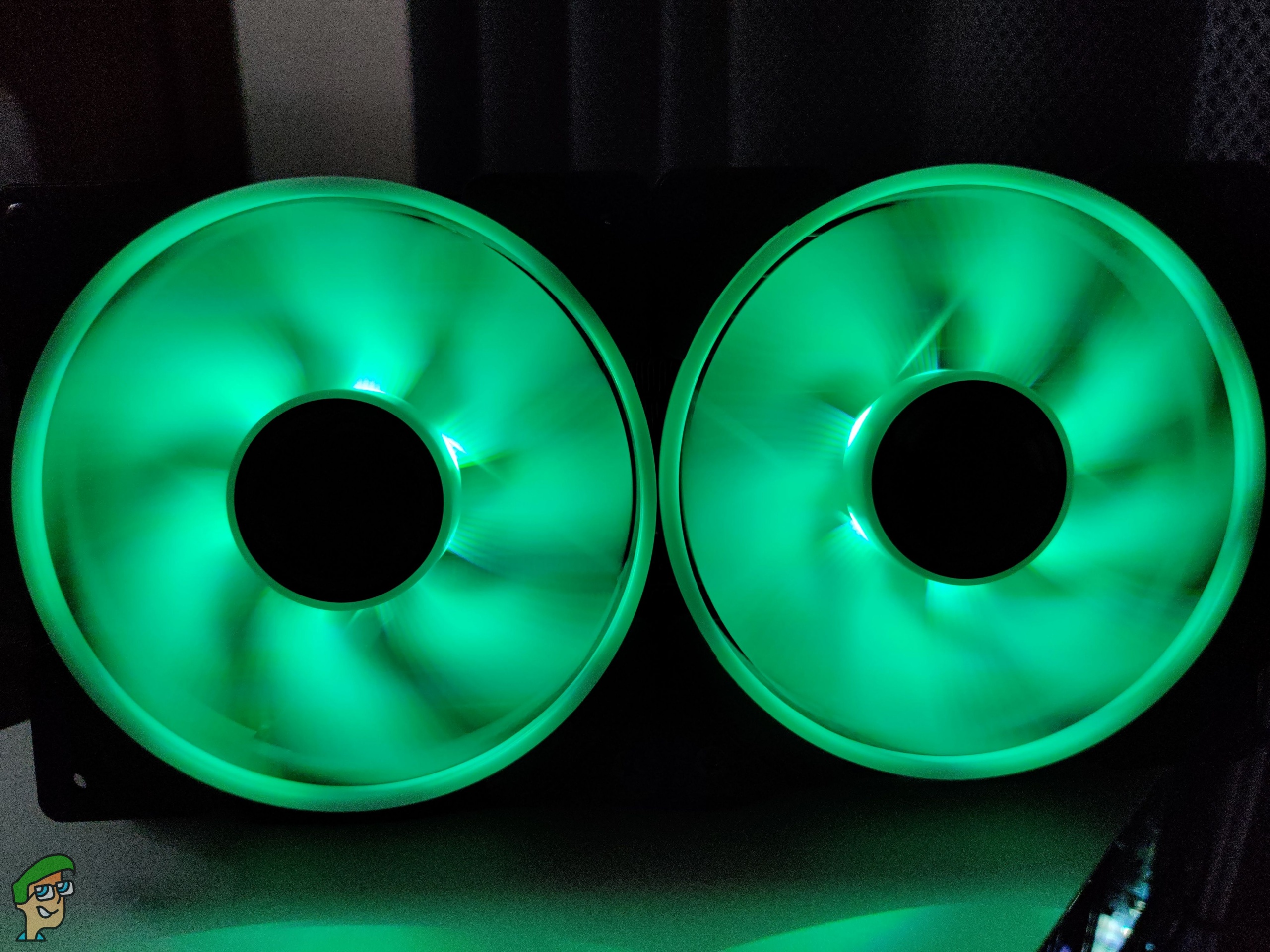
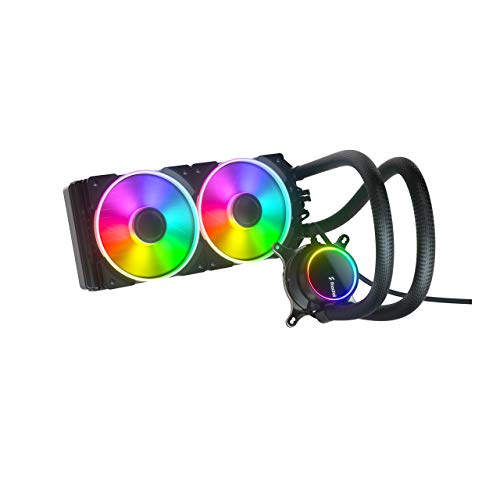
 Check Price
Check Price



